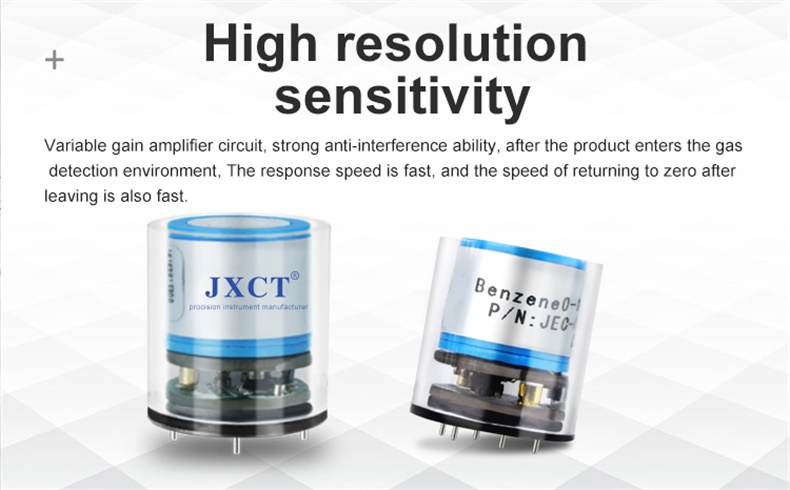Summary:
CO gas sensor is a safe gas detection product, which involves the production of carbon monoxide gas. At present, carbon monoxide sensor is widely used in mines, cars, families and other places where air quality and safety detection is needed. The carbon monoxide sensor can continuously detect the concentration of carbon monoxide gas in the site for 24 hours, and transmit real-time information to the monitoring platform, which can monitor the change of gas anytime and anywhere.
In addition, THE CO gas sensor adopts high sensitivity sensor, can automatically adapt to environmental changes, automatic correction of the aging curve of the sensor, has the characteristics of rapid response sensitive, strong anti-interference ability, is a kind of industrial safety instrument can keep the detection sensitivity constant.

Working principle of carbon monoxide sensor:
When carbon monoxide gas diffuses to the surface of the working electrode through the pores on the shell through the permeable film, the oxidation of carbon monoxide gas occurs on the working electrode under the catalytic action of the working electrode.
H+ ions and electrons generated by oxidation reaction on the working electrode are transferred to the opposite electrode with a certain distance from the working electrode through the electrolyte, and the reduction reaction occurs with oxygen in the water.
Therefore, a reversible REDOX reaction takes place inside the sensor.
This reversible REDOX reaction occurs all the time between the working electrode and the opposite electrode, resulting in a potential difference between the electrodes.
But because reactions at both electrodes polarize the electrodes, this makes it difficult to maintain a constant interelectrode potential and thus limits the range of carbon monoxide concentrations that can be detected.
To keep the interelectrode potential constant, a reference electrode was added. In the three electrode electrochemical gas sensor, the output end is reflected between the working electrode and reference electrode potential changes, due to the reference electrode is not involved in oxidation and reduction reaction, so it can make the electrode potential to maintain constant (i.e., constant potential), the change of potential is directly related with the changes in the concentration of carbon monoxide.
When the gas sensor produces an output current, its size is proportional to the concentration of the gas. The concentration of carbon monoxide can be detected with a wide linear measurement range by measuring the output current of the sensor with an external circuit through the lead line of the electrode. In this way, the external signal acquisition circuit and the corresponding conversion and output circuit on the gas sensor can realize detection and monitoring of carbon monoxide gas.
CO gas sensor is a kind of precision industrial electronic instrument, in the use of the process is susceptible to the influence of the external environment, resulting in inaccurate detection data, shorten the service life of the sensor.

How to maintain:
Therefore, in daily use, attention must be paid to the maintenance of the detector to maintain the detection sensitivity of its sensors. Note the following aspects during maintenance:
1. The installation. When installing carbon monoxide sensors, keep them away from places with heavy smoke.
2. Dust removal. When carbon monoxide sensor is used for a long time, its surface will accumulate a lot of dust, which seriously affects the detection sensitivity of carbon monoxide sensor. Therefore, carbon monoxide sensors should be dedusted regularly to keep the instrument clean.
3, moistureproof. Humid environment also affects the sensitivity of carbon monoxide sensor, and may even lead to instrument detection failure, so it is necessary to check whether there is water droplets in the instrument and dry it in time.
4. Clean. When cleaning the carbon monoxide sensor, avoid using detergent or solvent to wipe the instrument, which will damage the internal components of the carbon monoxide sensor and cause some chemical reactions in the sensor material.
5. Check. Maintenance personnel should regularly check whether the carbon monoxide sensor is in normal working state to avoid alarm failure.
 : +86 155 8830 2704
: +86 155 8830 2704 : jxdziot@gmail.com
: jxdziot@gmail.com
